Flow testing gets easier with complete kits for the ITM professional
A pitot gauge has long been an essential piece of equipment for hydrant flow tests and fire hose testing. Still, inspection, testing, and maintenance (ITM) professionals almost always need more tools to conduct these tests (and others) quickly and accurately. And even consumers who stick with basic pitot kits face a daunting variety of pressure gauges, blades, and pitot tubes.
This article aims to help ITM experts sift through those choices, focusing on kits that, at a minimum, contain fully-featured pitot gauges for flow tests. We also look at a line of products that combine these tools with other useful tools, including:
- Threaded caps used in static pressure tests
- Specialized valves, called bleeders, designed to protect gauges against excessive wear
- Digital gauges capable of storing highly accurate measurements
- Certified, specialized gauges meant to guarantee accuracy and ease of use
- Tachometers made for the (complex) task of testing fire pumps
- Elbows, nozzles, tape, and other neglected (but critical) accessories
View our full selection of pitot gauge kits, flow test accessories, and pressure gauges.
Not all flow tests require the same tools, but pitot gauges coupled with other parts can make fire hydrant tests (and other tasks) easier
Pitot gauge kits—which include a pitot tube, at least one blade, and a pressure gauge—are among the most trusted flow testing solutions. They’re portable, powerful, and fairly easy to use. By positioning the blade in front of a water-flowing orifice, ITM professionals can read the pressure of moving water. Those pressure readings, in turn, can be converted to gallons per minute (GPM), a measure of how quickly water flows. Lower-than-expected GPM readings may indicate obstructions, leaks, or rust in the network of pipes serving firefighting equipment.
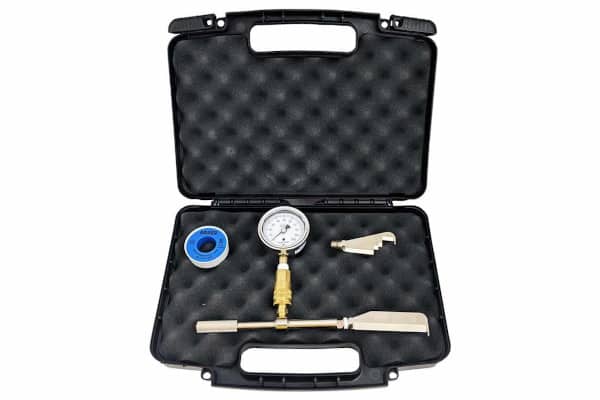
But it’s rare that an ITM professional only measures the pressure of flowing water, or residual pressure. Even hydrant flow tests involve measurements of static pressure—the pressure exerted by non-flowing water. Typical procedures involve contractors or government employees working in teams, with one person measuring static (non-flowing) pressure at a capped hydrant upstream and another measuring residual (flowing) pressure downstream.
That’s where fully featured flow testing kits come in. The simplest versions of these kits contain everything in a pitot gauge kit—the blades, handle, and gauge used for measuring residual pressure—along with a cap and a gauge used to measure static pressure. They may also include a few extras to make the process easier, such as:
- Thread seal tape, used primarily to form a water-tight seal between a pressure gauge and a test cap (or between a pitot tube and a blade)
- Bleeders, which protect gauges used with test caps
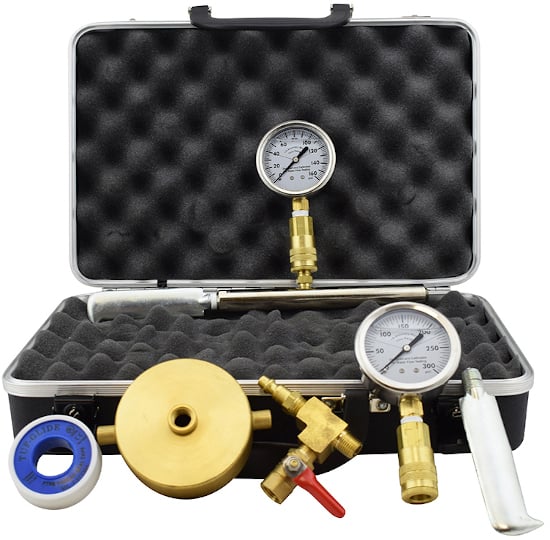
Kits like these can be broken down into roughly four types:
- Those that focus strictly on a lightweight solution to hydrant flow tests (typically, those with 2 1/2″ outlets)
- Generalist types that facilitate pressure readings at hydrants, hoses, and small outlets
- Kits that make these tasks significantly more manageable, adding flow-management tools like nozzles and elbows to the kits listed above
- Kits that combine digital gauges, tachometers, and certified equipment for teams conducting fire pump and other flow tests needing extreme precision
In the below sections, we explain how subtle differences in these kits—from an extra cap to an extra inch on the gauge dial—can have a big impact on usability, accuracy, and more.
Kit composition varies to facilitate fire hose testing, fire hydrant tests, and other ITM tasks
Notched blades and hex-shaped gripping surfaces are favorites in the world of pitot gauges
Every pitot gauge has three main parts:
- The blade, which directs flowing water into a tube
- The handle or tube that guides water to a pressure gauge
- The pressure gauge itself, which typically displays readings in pounds per square inch (PSI)
These tubes all guide water to a gauge in roughly the same way: one is, for the most part, as good as another. But flow tests—whether it’s fire pump, fire hydrant, or fire hose testing—require a steady grip. Hex-shaped handles offer an improved hold over more basic round handles. Our Inspector’s Choice lightweight handles combine a smooth body with a “knurled” (etched) base to lower a kit’s overall weight while still giving users something easy to hold on to. We’ve found that ITM professionals generally prefer the hex handles, which maximize the available gripping surface.
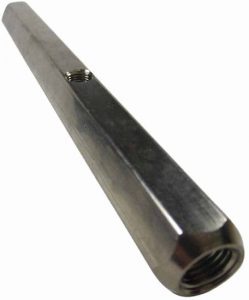
Like handles, all pitot gauge blades are roughly equal—but some offer reduced weights and improved grips:
- Straight pitot blades are the standard: they’re slightly heavier than other types, but can successfully guide flowing water into a pitot tube
- Notched blades make precision placement in a stream easier. Pressing the notch against the edge of an open orifice allows users to keep the tip of the blade at a specified depth within the stream, producing better readings in many scenarios.
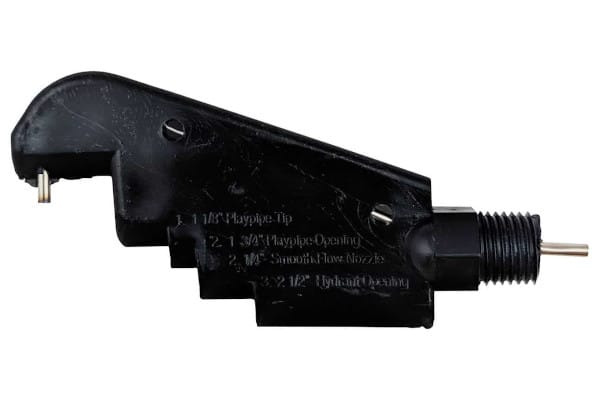
- Ultra-light blades—straight or notched—offer the same benefits while lowering the weight of the kit and the pitot gauge itself.
Caps make static tests possible, while flow nozzles and elbows remain a must-have for frequent testers of fire hydrants
Each of our flow test kits contains a 2-1/2″ test cap with National Standard Thread (NST). The reason is simple: a large number of fire hydrants in the United States have at least one male NST outlet. These caps also have a 1/4″ National Pipe Thread (NPT) outlet, which allows ITM professionals to connect a standard gauge (or, preferably, a bleeder valve). But these essential static-pressure-testing tools come in other sizes, including:
- 1-1/2″ NST, designed to fit many standard “attack” fire hoses
- 3/4″ NST, designed for readings at garden-hose-sized outlets
Contractors who only perform hydrant flow tests may not need these smaller sizes—but organizations engaged in a wider range of tests, including fire hose testing, may.
When it comes to residual flow tests at fire hydrants, two accessories can produce greater accuracy:
- Fire hydrant flow nozzles. These 2-1/2″ NST nozzles connect to an open orifice on a fire hydrant, smoothing streams for more accurate readings.
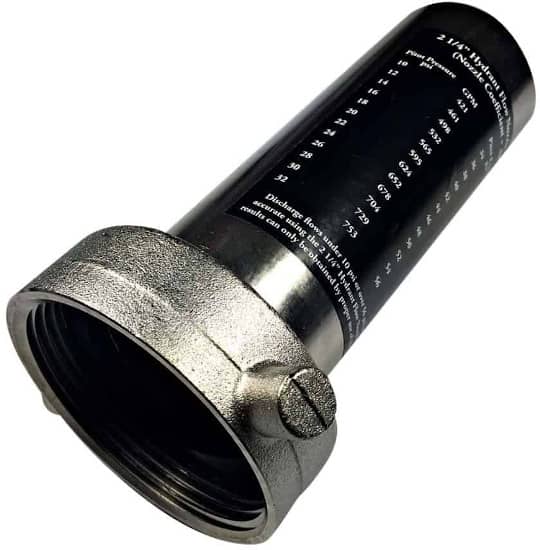
- Fire hydrant flow elbows. These 45-degree elbows allow users to redirect flow away from roads and sidewalks—all without compromising the accuracy of readings.
Full-range accuracy and a large gauge dial go a long way, but kits with certified gauges and the proper dial range also matter
Every gauge included with our flow test kits offers at least 1% accuracy—and digital gauges do even better. But the key distinction is whether that accuracy is full-range (also known as full-scale) or mid-range. Our deep-dive into gauge dial ranges explains that a gauge with mid-range accuracy isn’t necessarily that accurate outside of the middle half of the gauge. For example, a gauge showing 0-100 PSI on the dial would have 1% accuracy (in this case, accurate to +/- 1 PSI) between 25 and 75 PSI. At 0-25 PSI, or from 75-100 PSI, that precision isn’t guaranteed. But it is on a full-range or full-scale gauge: all readings from 0 to 100 PSI will be off by, at most, +/-1 PSI.
Kits for flow testing often allow buyers to select the exact gauge range. These vary substantially, but a good rule of thumb is to choose a range that places your expected measurements in the center of the dial. If fire hydrant tests routinely turn up results of 50 PSI, get a 0-100 PSI gauge; if your outlet discharges at 150 PSI, choose a 0-300 PSI gauge. Gauges routinely used in their high or low end may fail earlier—and it’s not any more expensive to purchase a device with the right range.
These devices may also feature NIST (National Institute of Standards and Technology) certification. A gauge with one of these certificates has been laboratory-tested against a calibrated gauge. For those working in industries with exacting standards of accuracy—including, and especially, contractors conducting flow tests for the military—it’s an irreplaceable addition.
A few other factors also deserve a good look:
- Dial size: simply put, a larger dial is easier to read. Test kits feature 2-1/2″, 3.2″, and 3-1/2″ sizes in any gauge range.
- Wet or dry: as a general rule, liquid-filled dials help wet gauges outlast their dry counterparts—and can limit flutter that makes readings hard to see. However, some brand-name dry gauges compensate for these effects, keeping gauges intact without a liquid filling.
- Brand: Ashcroft’s gauges are some of the most widely-used and trusted on the market. Patented features, including “Flutterguard” and “Duralife” design, often make their products easier to read and longer-lasting than their generic counterparts.
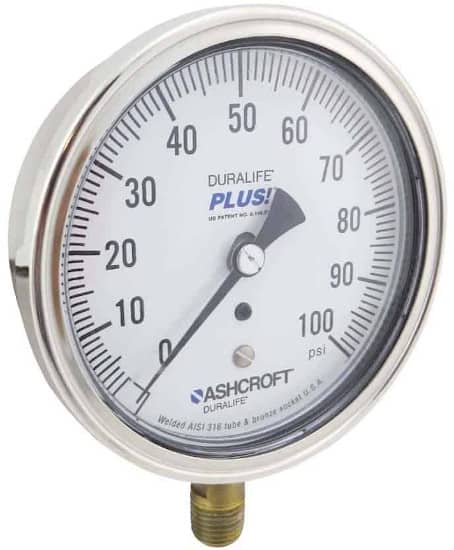
- Bleeders: they’re not, strictly speaking, part of the gauge. But they’re an important accessory for static tests. A single-valve bleeder provides a single handle that can direct water to a gauge or a built-in drain—but, effectively, there’s no “off” switch. A double-valve bleeder allows users to shut off flow to the gauge or drain separately, providing total control over the flow of water. Either type, properly used, will gradually pressurize or depressurize these delicate devices without sudden and potentially damaging changes in pressure.
In short: the best gauges have large dials, NIST certification, and protection via a bleeder—but there’s a wide variety available, and many of those choices have little or no impact on cost.
Digital gauges greatly enhance ITM readiness
Digital gauges may be the simplest, lightest, and most powerful addition to the ITM professional’s toolkit. As we explained in our article on digital pressure gauges in sprinkler ITM, various types of pressure gauges are found everywhere, but only digital gauges can:
- Facilitate tests and calibration of some existing gauges, allowing some to remain in service past NFPA 25’s five-year test-or-replace requirement
- Switch between units of measurement for use in a variety of applications, including fire pump and fire hose testing
- Improve convenience and adaptability with enhanced readability, stored pressure readings, low flutter, and customizable interfaces
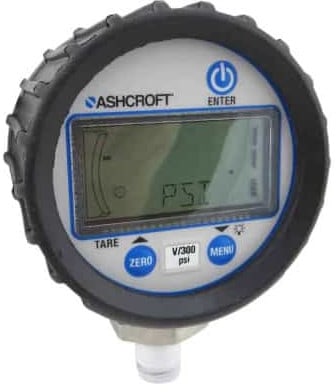
Tachometers round out complex testing kits with an emphasis on fire pumps and other motorized fire-protection devices
Fire pump flow tests are complex. Not only do they involve exacting measurements and comparisons of flow, but they also require a close look at the pump’s performance. Tachometers, which measure how quickly a motor or other device rotates, can be used to record the pump’s speed. A digital tachometer like the Checkline CDT 2000 HD round out the most advanced flow test kits, offering:
- Readings as fine as .01 revolutions per minute (RPM) for devices that spin at 100 RPM or less
- Measurements as large as 99,999 RPM
- Backlighting for use in dark spaces
- Contact and non-contact measurement (hold the tachometer against the spinning device—or not—to get readings)
- Certification to standards from NIST
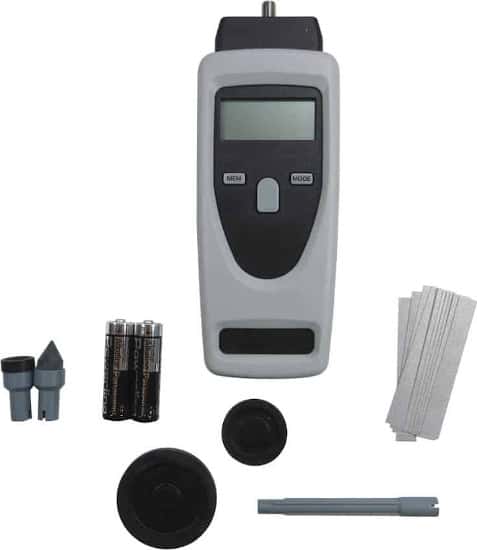
All-in-one kits make it easy to keep everything you need at the ready
We’ve sketched a rough outline of the different components that go into our flow testing kits—but different organizations have different needs. Some parts enhance fire hose testing, others specialize in hydrants, and some tools are critical for fire pump testing. View our full selection of pitot gauge kits, flow test accessories, and pressure gauges.
Check them out—or contact us at +1 (888) 361-6662 or support@qrfs.com.
This blog was originally posted at blog.qrfs.com. If this article helped you, check us out at Facebook.com/QuickResponseFireSupply or on Twitter @QuickResponseFS.


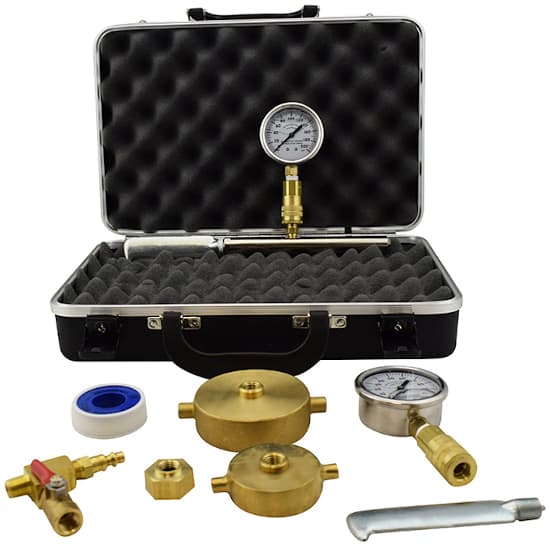
Please give me more information and cost
Rogelio — thank you for reaching out. Please take a look at our different Pitot Gauge Kits, as well as separate blades and handles. If you have questions, QRFS customer support is ready to help!
Hi ,
I’m looking for a pitot for a fire pump test . Please send me the quote and your recommendations . Ours fire pumps commun are : – 250GPM to 1250GPM
Thank you ,
Luis — thank you for reaching out. We will have someone from our QRFS Customer Support Team contact you.
Dear Sir / Madam,
Good day !
This is James of Asiashipping Co., Ltd. who is working as a ship supplier in S. Korea.
As requested by our customer, we would like to have the price as follows,
Hydrant test kit (Pipe spool with 21/2in storz end-connections including Flowmeter & Pressure gauge) 2 Refer to attached Hydrant hose datasheet
Shipping cost to the address undersigned (ASCO) :
Much appreciated for your cooperation in advance.
If further assistance or any queries, do not hesitate to contact us.
Thank you & Best Regards,
James Kim (김 원민 과장) | Manager| Overseas Sales & Marketing Team
ASIASHIPPING CO., LTD. (ASCO)
T. +82 (0)70 4217 2892 F. +82 (0)55 633 4644
M. +82 (0)10-9284-9384 E. ops@asiashipping.co.kr W. http://www.asiashipping.co.kr
A. 34-6 Junggok-ro 1-gil, Geoje-si, Gyeongsangnam-do, Republic of Korea (53249)
Hello James,
Thank you for reaching out. Our specialists at QRFS emailed you regarding your request. Please feel free to keep the communication going via support@qrfs.com. Thank you!
Please, can I get the quote for the pitot gauge kit, flow nozzle and elbow ,hex-shape handle, ultra light blade.
Thanks
Olabisi — Thank you for reaching out. We will have someone from our QRFS Customer Support Team contact you, and you can also email them any requests to get faster service!
Please give me more information and cost and shipping to KSA
Yasser — Thank you for reaching out. We will have someone from our QRFS Customer Support Team contact you. You can also email us any requests to get faster service!
Hi im looking for pitot gauge for fire hose / hydrant flow test
Rolando — QRFS carries a variety of flow testing kits, parts, and accessories. You can check out our selection, plus we’ll forward your request to the QRFS support team, which you can also reach at support@qrfs.com. Thanks!
i am Senthil Kumar ( mother engineering systems- website: http://www.motherengineeringsystems.in) turnkey fire hydrant contractor in India. i need one set of flow test pitot tube test kit – pressure range 160 psi. i want it for India – South India, Madras. Can u quote for it? My email ID is: motherengineeringsystems@gmail.com
Senthil — QRFS carries a variety of flow testing kits, parts, and accessories. You can check out our selection, plus we’ll forward your request to the QRFS support team, which you can also reach at support@qrfs.com. Thanks!